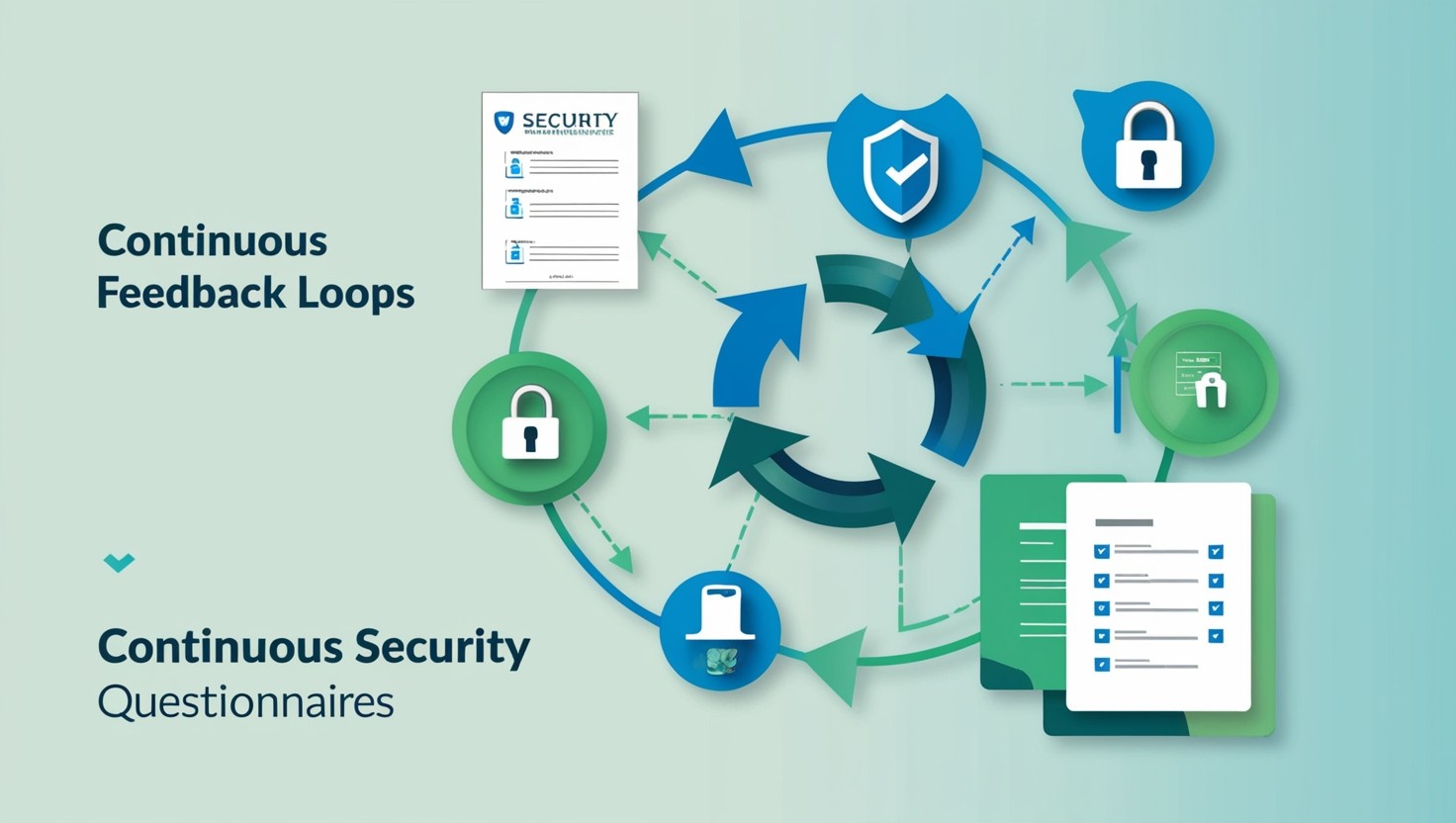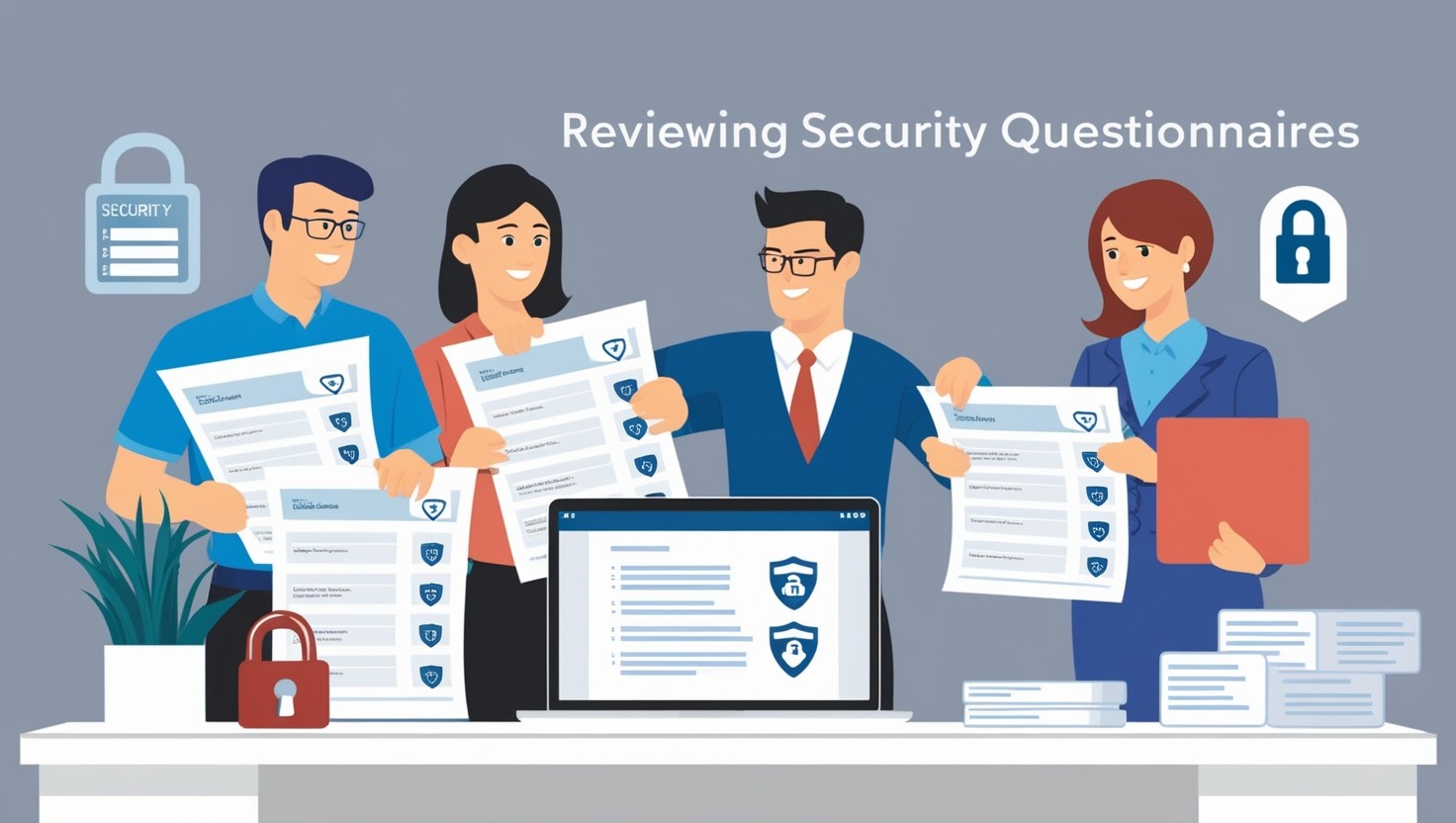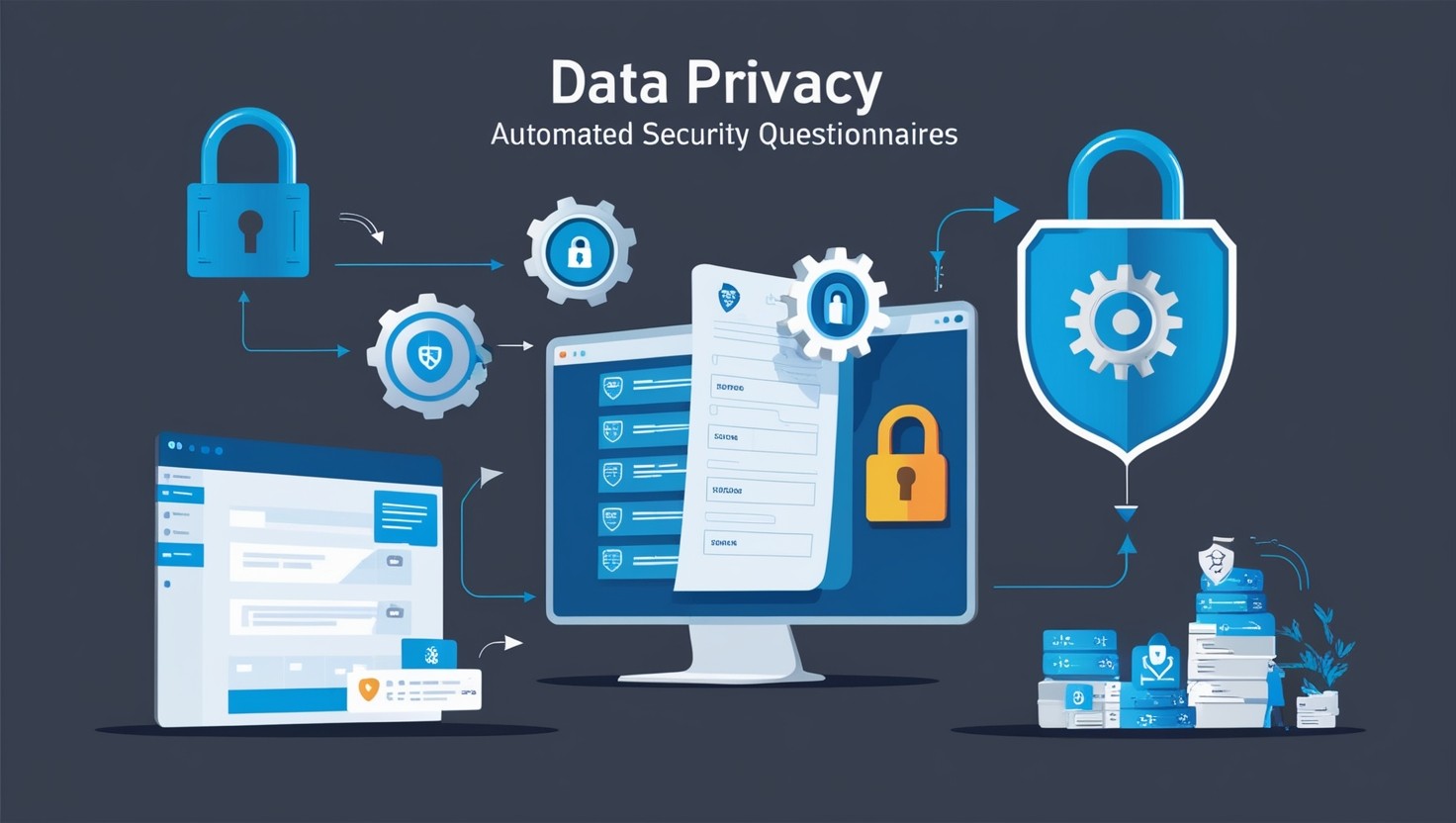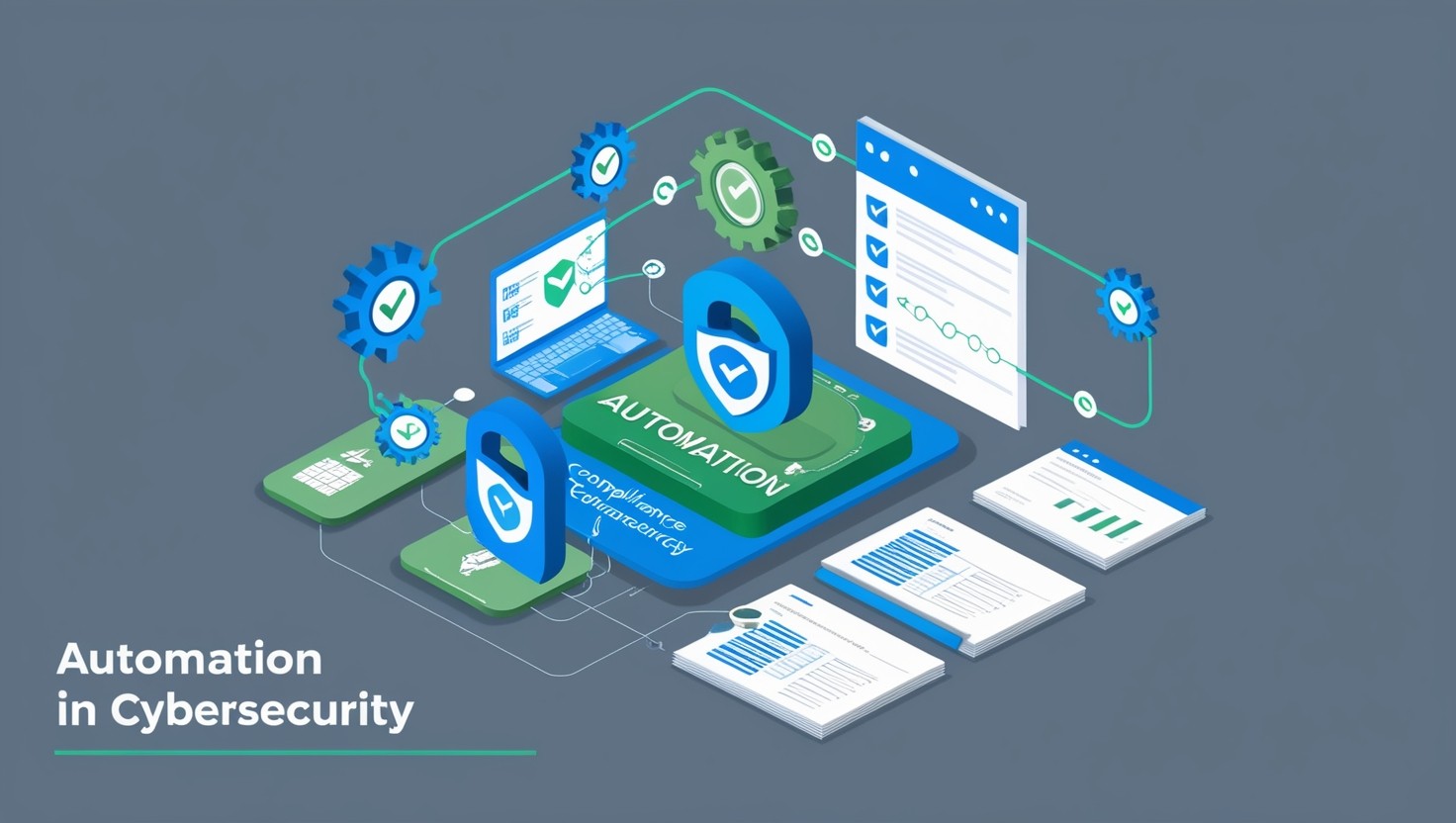How to streamline security questionnaires for faster completion
Share This Article
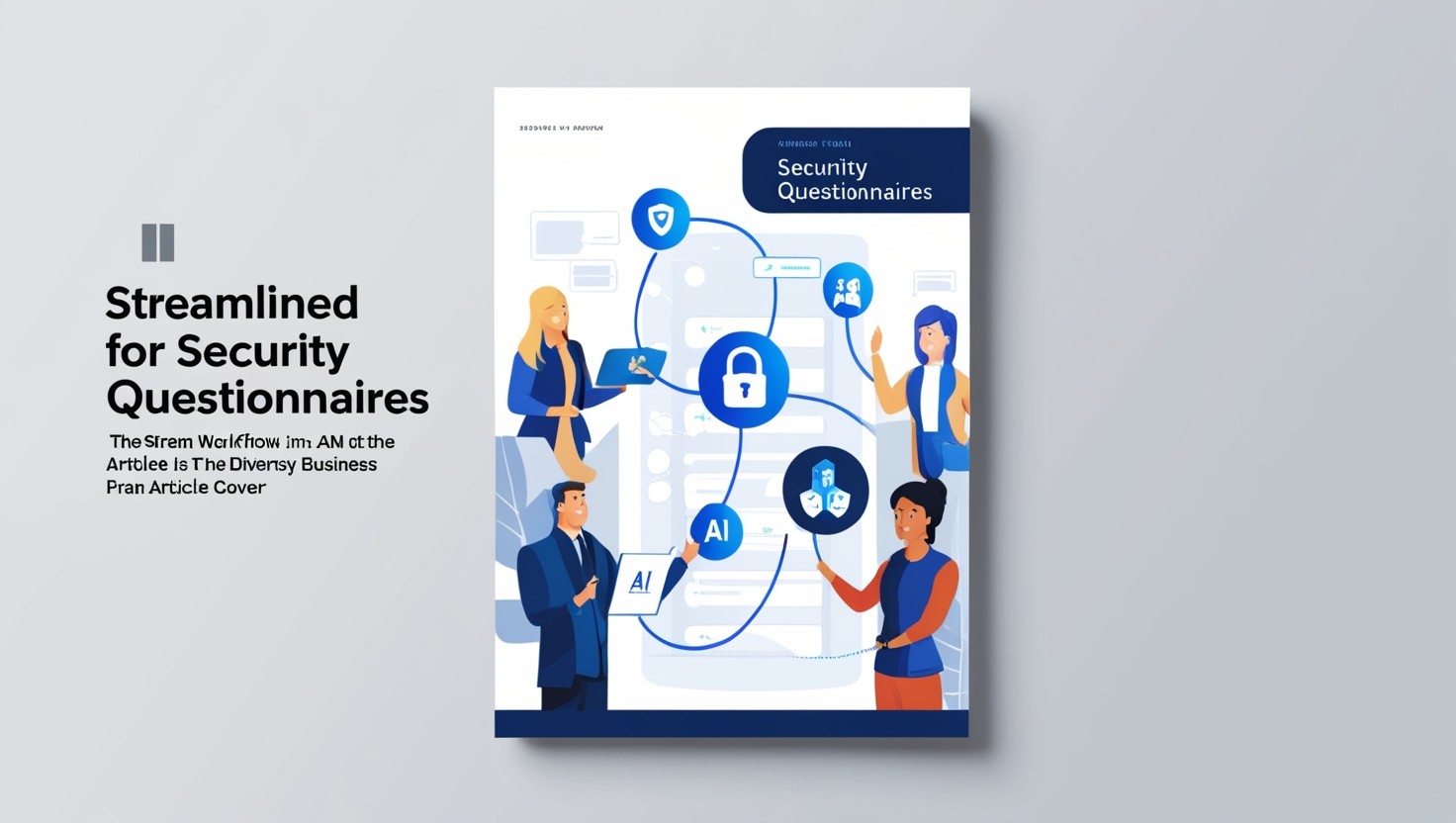
Streamlining Security Questionnaires
Efficiently managing and completing security questionnaires is crucial for organizations striving to maintain compliance and security standards. Addressing the various challenges and leveraging updated compliance frameworks, particularly in the health sector, can significantly streamline this process.
Challenges in Completing Questionnaires
Completing security questionnaires can be an arduous task, often requiring collaboration across multiple departments. According to SecurityPal, it can take up to two weeks to get a single questionnaire completed without implementing extreme measures. Even smaller organizations typically receive at least 25 of these questionnaires annually, while top enterprises can see thousands each year.
Key challenges include:
Time-Consuming Coordination: The need for input from different departments can delay the process. Each department must provide their part of the response, which often leads to bottlenecks.
Lack of Continuity: When team members work in isolation, they might miss out on key context, leading to inconsistent or incomplete answers.
Creating a collaborative space where teams can work simultaneously can help alleviate these issues. A unified workspace allows team members to provide context for their responses, reducing delays and ensuring comprehensive answers. More insights on this approach can be found in our article on collaboration in security questionnaires.
Utilizing Health Sector Compliance Updates
Another effective strategy for streamlining security questionnaires is staying up-to-date with compliance frameworks, especially those in the health sector. Recent updates to health sector compliance frameworks as of July 2024 can be integrated into an organization's processes to save time and ensure preparedness.
By continuously updating their compliance practices based on the latest guidelines, organizations can create standardized responses that align with the most current security protocols. This not only speeds up the process but also ensures the organization meets all necessary standards.
Security questionnaires meticulously validate critical information, including an organization's background, operational methodologies, and security protocols (Scytale). These updates can be incorporated into your responses to cover any new requirements or changes in standards. For more insights into leveraging compliance updates, read our detailed guide on compliance in security questionnaires.
By addressing these challenges and utilizing the latest compliance updates, organizations can streamline their approach to security questionnaires, saving valuable time and ensuring thorough and accurate responses. For additional tips, explore our articles on best practices for security questionnaires and reducing time to complete security questionnaires.
Automation Tools for Questionnaires
Automation tools can significantly enhance the efficiency of completing security questionnaires. These tools, particularly AI-driven platforms and SOAR systems, streamline the process and reduce time spent on manual responses.
AI Tools for Efficient Responses
AI tools are changing how security and compliance officers handle questionnaires. These tools use artificial intelligence to analyze past responses and auto-generate answers for new questionnaires. AI tools can identify patterns, learn from previous data, and apply this intelligence to streamline future responses.
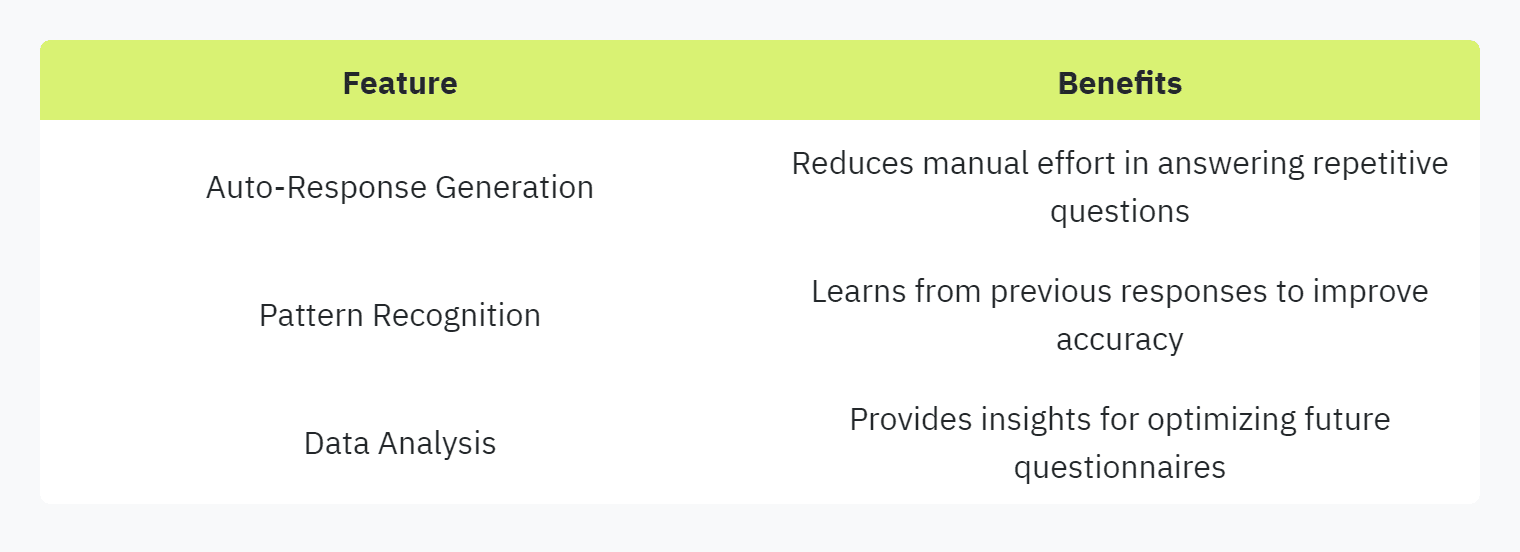
Using AI tools, security teams can collaborate more effectively, ensuring consistent and accurate responses across different security questionnaires. For more information, check out our guide on automating security questionnaires.
Implementing SOAR Platforms
Security Orchestration, Automation, and Response (SOAR) platforms offer a comprehensive solution for managing security questionnaires. SOAR platforms integrate various security tools and processes, allowing for automated data collection and response generation (TechTarget).

These platforms improve incident detection, response, and collaboration among security teams. They provide a unified approach to handling security questionnaires, reducing time and effort. Unlike SIEM systems, SOAR platforms extend capabilities with broader integration and intelligent response mechanisms (TechTarget).

By implementing SOAR platforms, organizations can reduce time to complete security questionnaires, ensuring faster and more accurate responses. Explore our article on tools to simplify security questionnaires for more insights.
Embracing AI tools and SOAR platforms can revolutionize the process of streamlining security questionnaires, making it not only efficient but also more reliable.
Best Practices for Answering Questionnaires
Completing security questionnaires can be a daunting task for many organizations, particularly those in the IT and SaaS sectors. Implementing best practices helps streamline the process, ensuring both efficiency and accuracy.
Collaborative Spaces for Teamwork
Creating a collaborative space where teams can work simultaneously on security questionnaires can prevent delays and ensure better continuity in responses. By providing full context for each team's portion of the questionnaire, organizations can improve the quality and consistency of their answers. This approach allows multiple stakeholders to contribute their expertise, facilitating a more comprehensive and accurate response.

For more tips on creating collaborative environments, refer to our article on collaboration in security questionnaires.
Determining Applicable Questions
Often, security questionnaires contain a plethora of templated and generic questions; however, not all of them may apply to your organization. Identifying and filtering out irrelevant questions can save time and streamline the process. This proactive approach showcases the organization's strengths while minimizing any perceived weaknesses. Being selective about the questions you answer ensures that you focus on providing detailed and accurate information pertinent to your organization.
For an effective filtering process:
Analyze the Relevance: Determine which questions apply to your organization.
Showcase Strengths: Focus on highlighting your organization's strengths.
Minimize Weaknesses: Bypass unrelated or less favorable areas.
Understanding which questions are applicable can significantly reduce response time while improving the overall submission quality. Explore more on this topic through our guide on determining applicable questions in security questionnaires.
By adopting these best practices and integrating additional strategies, such as using automation tools and maintaining effective communication, organizations can navigate the complexity of security questionnaires with greater ease and efficiency. For further details on enhancing your security questionnaire process, visit our section on best practices for security questionnaires.
Enhancing Data Quality in Questionnaires
Ensuring high data quality in security questionnaires is crucial for accurate and reliable responses. This section delves into the importance of communication and implementing quality checks to enhance data quality.
Importance of Communication
Effective communication is key in maintaining high data quality. Clear and consistent communication between team members and respondents helps minimize errors and ensure that everyone is on the same page. Here are some critical aspects of communication to focus on:
Real-time Information Channels: Implement real-time communication channels such as chat platforms or project management tools. These channels facilitate prompt exchange of information, reducing misunderstandings.
Clear Objectives and Feedback Mechanisms: Define clear objectives for each team member and establish feedback mechanisms to ensure that all participants understand their roles and responsibilities. Timely feedback helps in quickly addressing any issues that arise.
Assistance Contacts: Provide defined contacts for team members to seek assistance when needed. This ensures that any uncertainties or problems can be resolved quickly, reducing the chances of errors.
Communication with Respondents: Enhance communication with respondents by planning for potential issues such as language barriers, connectivity problems, and time zone differences. This ensures that responses are accurate and comprehensive.
For more information on improving communication in security questionnaires, visit our article on communication in security questionnaires.
Implementing Quality Checks
Quality checks are essential in identifying and correcting errors early in the data collection process. Implementing a robust quality assurance plan helps maintain the accuracy, completeness, consistency, and correctness of the data. Here are some quality check methods to consider:
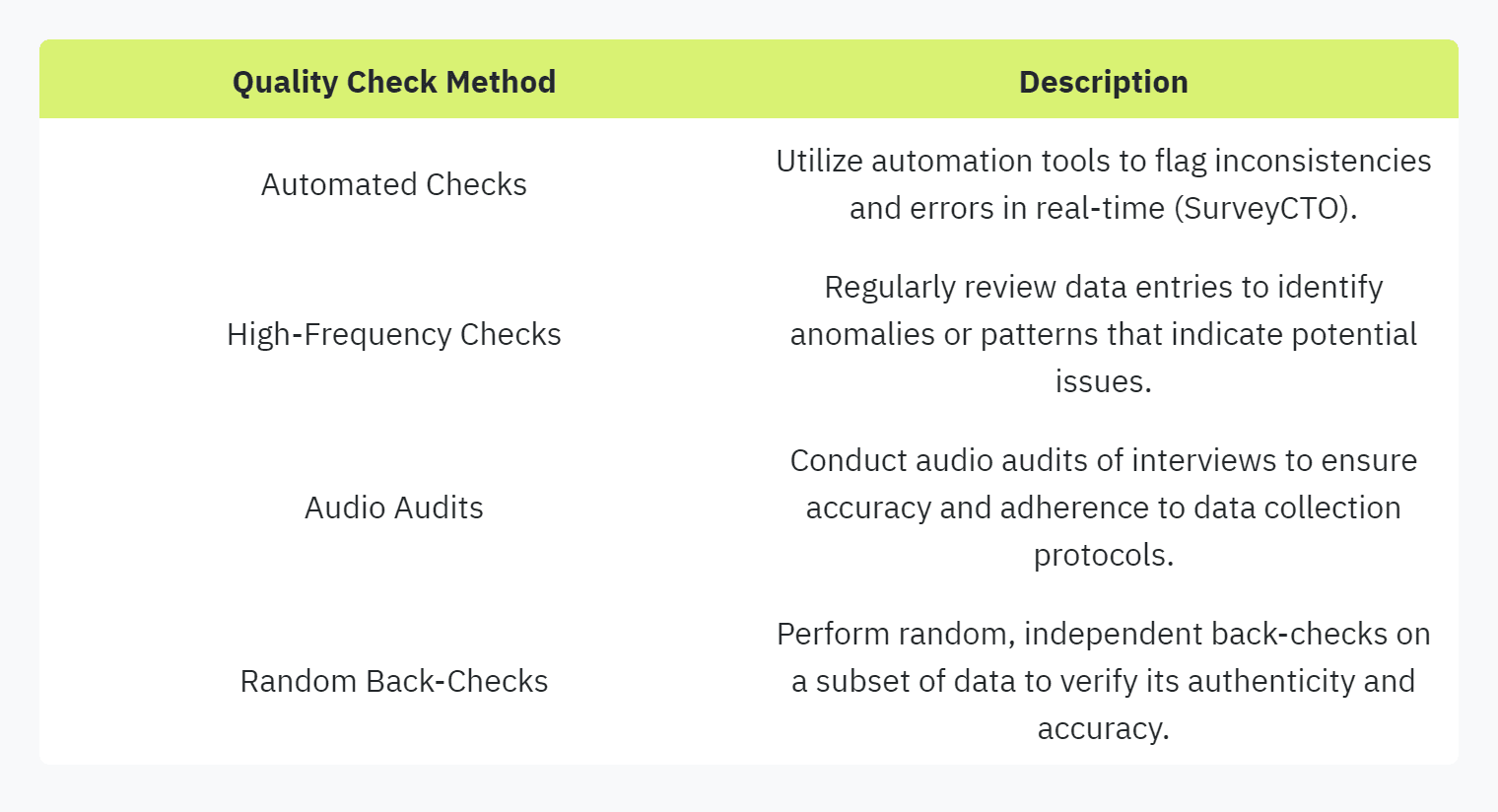
Implementing these quality checks ensures the integrity of the data collected through security questionnaires. Automated tools like SurveyCTO provide intelligent audits and smart questionnaire designs that help in minimizing errors and enhancing data quality (SurveyCTO).
By focusing on strong communication channels and rigorous quality checks, organizations can effectively streamline security questionnaires for faster completion and higher data quality. For more best practices on security questionnaires, visit our guide on best practices for security questionnaires.
Enter your email to start accelerating your sales today.


